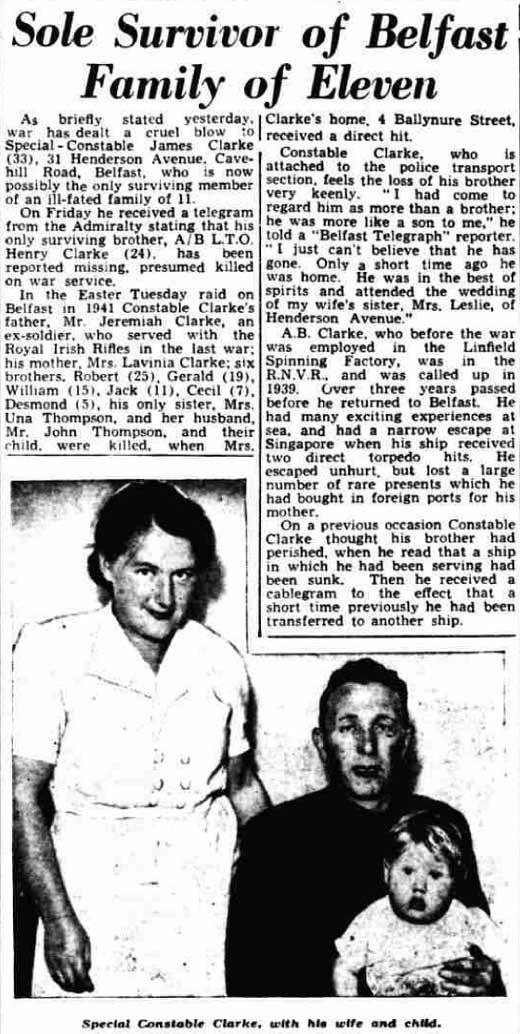Private Jeremiah Maneely Clarke
Jeremiah (Jerry) Maneely Clarke was born on 19 May 1889 at Slatt, Connor, County Antrim, the ninth of eleven children of labourer (previously weaver) James Clarke and his wife Catherine (née Millar). At the time of the 1901 Census he was living in James Street, Ballymena, with his parents and his seven surviving siblings and working as a message boy. By 1908 he was living at nearby Harryville and working as a horse trainer. On 8 February that year he married Lavinia Marrs in the West Presbyterian Church, Ballymena. The couple's first four children were born over the next five years, though all but one died when very young. At the time of the 1911 Census the family was living in James Street, Ballymena, Jerry working as a jockey.
Clarke enlisted in the North Irish Horse on 28 May 1915 (No.1635). He trained at the regiment's Antrim reserve depot before embarking for France in 1916 or the first half of 1917, where he was posted to one of the squadrons of the 1st or 2nd North Irish Horse Regiments.
In August-September 1917 the 2nd NIH Regiment was disbanded and its men, together with some surplus to the needs of the 1st NIH Regiment, were transferred to the Royal Irish Fusiliers, an infantry regiment. Most, including Clarke, were transferred on 20 September and posted to the 9th (Service) Battalion – renamed the 9th (North Irish Horse) Battalion – joining it in the field at Ruyaulcourt five days later. Clarke was issued regimental number 41393.
Clarke received a severe wound to his left forearm on 22 or 23 November 1917 in the fighting for the village of Moeuvres, during the initial phase of the Battle of Cambrai. (The 9th (NIH) Battalion sustained 89 casualties over those two days, according to its war diary.)
Evacuated to the UK for treatment, on 16 October 1918 Clarke was discharged, being 'no longer physically fit for war service' (paragraph 392 (xvi), King's Regulations). He was granted a pension due to his wounds, his level of disability assessed at 40 per cent in September 1919. (By March 1922 this had improved to 6-14 per cent.)
After the war Clarke lived with his family at 4 Ballynure Street, Belfast, and worked as a labourer.
During World War 2, on the night of 15/16 April 1941, the German Air Force carried out a major bombing raid on Belfast, causing hundreds of casualties and destroying or damaging thousands of homes. Among these was the home of the Clarke family in Ballynure Street. Jerry and his wife Lavinia were killed, together with their children Robert (aged 26), Jeremiah (Gerald) (17), William (15), Lavinia (14), John (13), Cecil (12) and Desmond (10). They are commemorated on the Commonwealth War Graves Commission's Civilian War Dead Roll.
One of Clarke's two surviving children, Able Seaman Henry Clarke, was killed on 20 September 1943 when the frigate HMS Lagan was struck by a German torpedo while on convoy duty.

Belfast Telegraph, 25 September 1943
My thanks to Nigel Henderson, researcher at History Hub Ulster for pointing out the WW2 link for this North Irish Horseman.
